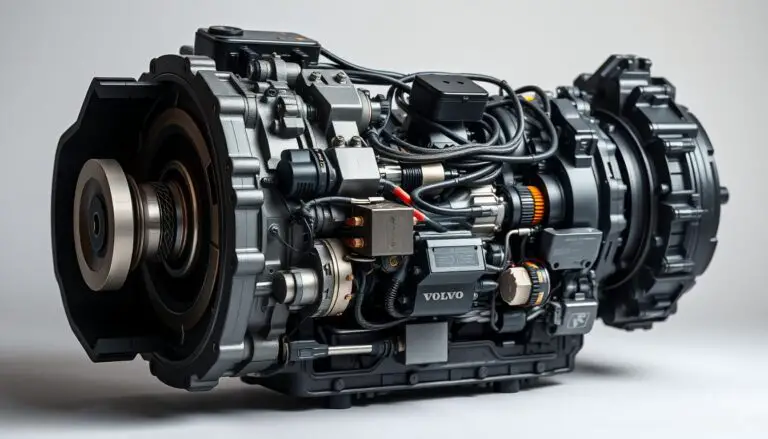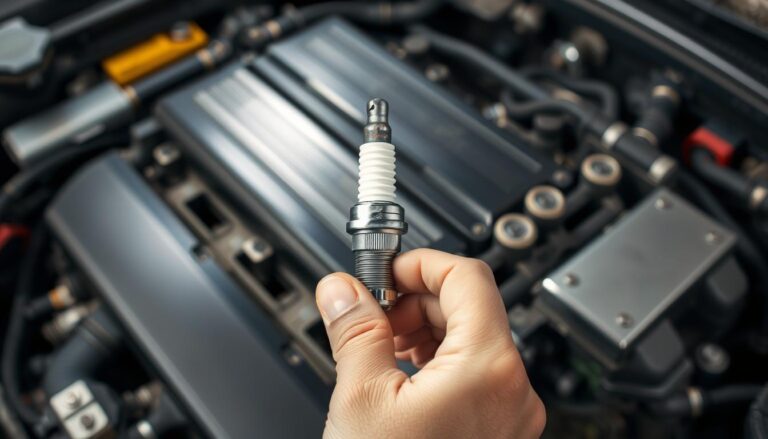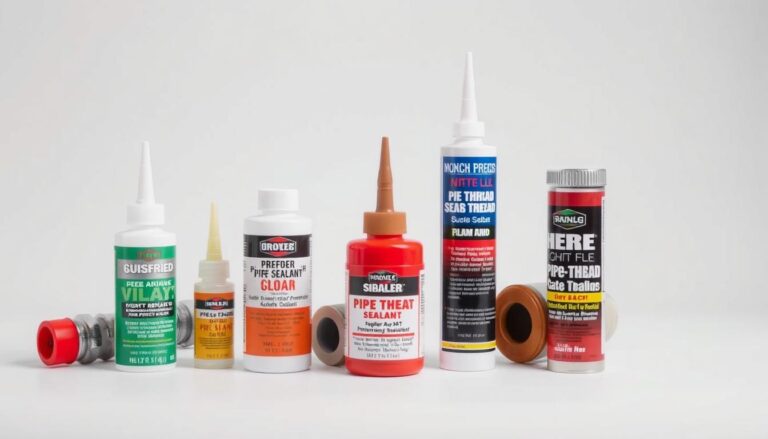Understanding repair costs helps you decide whether a fix or full replacement makes the most sense for your car and your wallet.
Typical U.S. ranges span roughly $200 to $1,300 for common fixes and can reach $1,500+ for major work. Labor usually runs about $65–$75 per hour, and most bumper jobs take 2–5 hours.
Minor scratches and small dents often land between $200 and $500. Cracks may cost $500–$1,500, while full replacement often falls near $800–$1,500+ depending on parts and paint.
Parts availability, appointment timing, and calibration of parking sensors or front radar can add time and expense for cars with advanced systems.
This buyer’s guide explains typical price bands, what influences repair costs, and how to read line items on an estimate so you can compare quotes confidently.
Key Takeaways
- Expect common repair ranges from about $200 to $1,300; total expenses can exceed $1,500 for severe damage.
- Labor is a key driver — most jobs take 2–5 hours at roughly $65–$75 per hour.
- Minor dents and scratches are cheaper; cracked parts or full replacement cost significantly more.
- Volvo-specific sensors and radar may require calibration, adding time and charges.
- Parts availability and scheduling affect turnaround and final charges.
- Use the listed ranges to benchmark estimates and prioritize safety over low price.
At a Glance: Current Volvo Bumper Repair Price Ranges in the U.S.
A short cost guide puts common repair and replacement ranges into clear perspective.
Quick snapshot: Minor scratch and small dent work generally falls between $200 and $500. Cracked panels push estimates toward $500–$1,500, while full replacement often lands near $800–$1,500+.
Labor typically runs about $65–$75 per hour, and many jobs take 2–5 hours. Parts availability and paint matching can extend turnaround and raise carrying fees.
| Service | Typical U.S. Range | Notes |
|---|---|---|
| Minor scratches / dents | $200–$500 | Cosmetic work; quick dent repair available |
| Cracked panel repair | $500–$1,500 | Depends on extent damage and type repair |
| Full replacement | $800–$1,500+ | Higher for luxury vehicles, sensors, and paint blends |
- Get at least three quotes and compare itemized line items.
- Ask repair shops for parts ETA and whether calibration is included.
- Send photos first to help an auto body advisor suggest dent repair or replace bumper to save money.
Volvo Bumper Repair Cost: What Drives the Price Up or Down
A few key factors explain why similar-looking damage can lead to very different invoices. Understanding them helps you compare quotes and choose the right scope of work.
Extent of damage
Minor scuffs and small dents typically need surface prep and refinish and usually fall between $200 and $500.
Cracks, torn mounting tabs, or torn plastic add labor and may push the job into the $500–$1,500 band.
Make, model, and trim
Luxury vehicles and higher trims often mean more complex paint systems, built‑in sensors, and pricier OEM parts. That complexity can create higher costs for parts and blending.
Labor rates and location
Urban shops typically charge more per hour than suburban facilities. Expect local labor to range around $65–$75/hour, which affects total hours billed.
Shop specialization and warranties
Shops experienced with advanced driver assistance systems may include sensor calibration in-house. That can save time and reduce sublet fees.
“Always compare itemized estimates line by line to match scope, labor, and calibration steps.”
- Body materials and type vehicle affect whether a repair or repair replacement is recommended.
- Tab repairs, reinforcement, or hidden alignment work add hours and parts line items.
- Warranties and in-house calibration add value even when sticker prices look higher.
| Factor | Impact | Typical range |
|---|---|---|
| Minor cosmetic damage | Quick refinish | $200–$500 |
| Cracks / structural damage | Plastic bonding or replace | $500–$1,500 |
| Full replacement | Parts, paint, install | $800–$1,500+ |
Volvo-Specific Considerations: Sensors, Radar, and Paint That Affect Costs
Today’s driver‑assist hardware often sits behind the fascia, so what looks minor can require specialist work.
Front radar and parking sensors: Many late‑model vehicles place radar and ultrasonic parking sensors behind the bumper skin. Any removal or heavy tapping after an impact can trigger faults. If the radar unit or brackets are moved, alignment and calibration are required and that adds labor and costs.
Front radar and parking sensors: when alignment and calibration add labor
Calibration often needs specialized targets and software. Some procedures are dealer‑level or done by specialists. Ask whether the auto body facility performs calibration in‑house or sublets the work, since sublets increase cycle time and may raise the final bill.
BLIS and paint thickness: why refinishing choices matter
BLIS sensor windows and mounting areas are sensitive to paint thickness. Excessive layers or heavy film over sensor zones can reduce sensitivity. Follow manufacturer guidance and choose sensor‑safe paint protection patterns to avoid degraded performance.
When repainting is fine—and when replacement is the safer bet
Repainting works for light cosmetic damage away from sensor fields. But when cracks cross a sensor pocket or mounting flange, even a neat cosmetic fix can fail to preserve alignment. In those cases, replacement is often the safer, long‑term choice.
“Confirm that the estimate includes any needed calibrations; omitting them can lead to warning messages or reduced system function.”
- Document pre‑ and post‑repair scans to clear fault codes and verify sensors report healthy status.
- Severe damage around sensor apertures often drives true repair costs close to replacement once rework and calibration are included.
- Before authorizing work, confirm calibration scope and whether shops include it in the estimate.
Repair vs. Replacement: Deciding the Right Path for Your Volvo
A quick visual check and a professional inspection will show whether repair or replacement delivers the best value. Focus first on safety and function, not just appearance.
- Visible cracks or splits that can grow and weaken structure.
- Warping or twisting of plastic from heat or impact that alters fit.
- A loose or hanging cover because clips or fasteners are broken.
- Rust or corrosion on metal reinforcements behind the skin.
When a repair can save money:
- Light scratches and small dents that only need paint and blend.
- Cosmetic scuffs that don’t affect mounts or sensor alignment.
- Minor damage where labor to refinish is clearly less than replacement labor and parts.
Make the choice with data
Ask your shop for side‑by‑side estimates showing parts, labor, and calibration. A clear repair vs. replacement comparison helps you see where money is best spent.
“When in doubt, prioritize structural integrity and post‑work system checks to avoid repeat visits.”
Damage-Level Estimates: From Minor Scratches to Extensive Bumper Damage
Start by matching visible damage to likely work scopes so estimates stay realistic. Broken parts, cracks, or only surface scuffs call for different steps and different price bands.
Minor scratches and dent repair: typical scope and cost
Light scuffs and small dents usually need cleaning, sanding, plastic prep, primer, color, and clear coat with a blend to adjacent panels.
Expect about $200–$500 for this level. Colors with metallics or pearls, or textured lower sections, push the price toward the top of the range.
Cracked or broken bumper: bonding vs. replacement implications
When cracks appear, shops may use plastic welding or structural adhesives. That method adds labor and can cost between $500 and $1,500 depending on size and reinforcement needs.
If cracks cross sensor pockets or mounting tabs, many facilities favor repair replacement to preserve fit and function. A quick fix may not hold and can trigger diagnostics later.
Full bumper replacement: parts, paint, and install considerations
Extensive damage that distorts shape, tears mounting holes, or exposes reinforcements usually justifies a full replacement.
A complete replacement estimate covers the cover, brackets or clips, paint materials, labor to remove and install trim and lights, and any required calibration. Typical range: $800–$1,500+.
“For severe damage, factor in the risk of rework; a lower initial quote can cost more if sensors or fitment fail.”
| Damage level | Likely range | Notes |
|---|---|---|
| Minor scratches / small dents | $200–$500 | Spot repair, blending; saves money bumper on cosmetic work |
| Cracked or broken cover | $500–$1,500 | Welding/adhesives; avoid near tabs or sensor holes |
| Full replacement | $800–$1,500+ | Parts, paint, R&I, possible calibration |
How to Save Money Without Compromising Safety
Smart choices before you book work can cut expenses while keeping safety intact.
Get multiple quotes and compare scope, not just price
Collect at least three written estimates from local repair shops. Compare parts, labor hours, paint materials, calibration, and warranty.
Don’t pick the cheapest line—match scope and included services.
DIY for minor damage: kits, limits, and risks to avoid
DIY kits can address light scuffs and tiny dents and help you save money. Expect a lower-quality finish and potential color mismatch.
When plastic prep or sensor zones are involved, professional auto body repair usually avoids costly rework.
Insurance decisions: when a claim may raise long-term costs
Run the numbers before filing an insurance policy claim. A small claim can increase premiums or add surcharges that outweigh out-of-pocket repair savings.
Choosing the right repair shop: experience and calibration matter
Pick an auto body shop with experience on your vehicle, in-house calibration, or dealer partnerships. Professional work often includes warranties and clean post-repair scans.
“Ask for pre‑ and post‑repair scan reports and a road test to confirm sensor health.”
| Action | Why it helps | Tip |
|---|---|---|
| Get 3 written estimates | Compare true scope and hours | Match parts, paint, and calibration |
| Consider DIY only for light scuffs | Save money but watch finish quality | Test kit on hidden area first |
| Check insurance impact | Avoid premium hikes on small claims | Compare deductible vs. long-term costs |
| Choose qualified auto body shop | Reduces rework and preserves systems | Request photos, warranties, and scans |
Conclusion
A concise checklist makes it easier to compare estimates, ask the right questions, and protect vehicle systems.
Typical ranges: minor scratches and small dents usually run about $200–$500. Cracked panels often fall near $500–$1,500, and full bumper replacement sits around $800–$1,500+.
Decide by focusing on safety and sensor function, not just price. For vehicles with front radar or parking sensors, calibration can add time and higher costs. Prioritize shops that show parts, labor hours, materials, and any sublet calibration on the estimate.
When damage is light, quality work restores appearance and function. For extensive damage that risks fit or alignment, replacement is the wiser long‑term choice. Choose an experienced auto body partner and keep documentation of scans and warranties to reduce surprises.
FAQ
What typical price range should I expect for repair versus replacement?
Repairing minor scratches and small dents often falls between 0 and 0, while more extensive work or full replacement including parts, paint, and labor can exceed
FAQ
What typical price range should I expect for repair versus replacement?
Repairing minor scratches and small dents often falls between $200 and $800, while more extensive work or full replacement including parts, paint, and labor can exceed $1,500. Prices vary with parts availability, paint matching, and any needed electronic recalibration.
How does the extent of damage affect the estimate?
Small surface scratches and shallow dents usually require less time and materials, so they cost far less. Cracks, warping, or structural damage often mean bonding won’t hold long-term and replacement becomes the safer option, driving the price up due to new parts and installation.
Do model and trim level influence repair bills?
Yes. Higher trims and recent model years tend to have more sensors, trim-specific parts, and premium paint, which raises parts and labor costs. Luxury-grade finishes can require additional steps to match color and gloss, increasing shop time and expense.
Why do labor rates vary so much between shops and locations?
Urban shops generally charge higher hourly rates than suburban ones because of overhead and local wage levels. Specialist shops with experience in luxury cars may charge a premium but often deliver calibration and fitment that general shops can’t guarantee.
When will sensors or radar add to the bill?
If impact affects parking sensors, radar modules, or driver-assist hardware, the repair often requires realignment or recalibration after parts install. That adds labor time and sometimes diagnostic fees, especially if factory-level tools are required.
Is repainting always necessary after replacement?
Not always. If a replacement part matches the vehicle’s original color and finish, minimal refinishing may be needed. Often, however, primer and blending are needed to achieve an invisible match, which increases paint labor and materials costs.
How do I know when replacement is a better choice than repair?
Consider replacement when plastics are fractured, mounting points are damaged, the part is warped, or corrosion has compromised strength. If repairs would be visible, compromise safety, or cost nearly as much as a new part, replacement is usually smarter.
Can I save money by repairing minor scratches myself?
DIY kits can address shallow scratches and small scuffs and save money, but they work best on clearcoat-level damage. Deep paint loss, structural issues, or sensor-related problems should be handled by professionals to avoid safety or warranty issues.
Will filing an insurance claim always cover the expense?
Coverage depends on your policy, deductible, and whether the damage was from a collision or comprehensive event. Filing a claim may cover repairs but could increase premiums; weigh out-of-pocket costs versus the long-term impact on rates before claiming.
How can I get the most reliable quotes from shops?
Request itemized estimates that separate parts, paint, labor, and calibration. Ask shops about warranties, their experience with your vehicle line, and whether they use OEM or aftermarket parts. Compare scope rather than only the bottom-line price.
Are aftermarket parts a good way to reduce expenses?
Aftermarket parts often cost less than OEM parts and can be fine for cosmetic work. However, fitment, color match, and long-term durability can vary. For safety-critical pieces or sensor housings, OEM parts and certified shops are usually the safer choice.
What should I ask a shop about calibration and warranty?
Confirm whether the shop can perform electronic calibrations for parking sensors and driver-assist systems, whether they use factory tools, and what warranty covers parts and labor. A clear, written warranty protects you if issues surface later.
,500. Prices vary with parts availability, paint matching, and any needed electronic recalibration.
How does the extent of damage affect the estimate?
Small surface scratches and shallow dents usually require less time and materials, so they cost far less. Cracks, warping, or structural damage often mean bonding won’t hold long-term and replacement becomes the safer option, driving the price up due to new parts and installation.
Do model and trim level influence repair bills?
Yes. Higher trims and recent model years tend to have more sensors, trim-specific parts, and premium paint, which raises parts and labor costs. Luxury-grade finishes can require additional steps to match color and gloss, increasing shop time and expense.
Why do labor rates vary so much between shops and locations?
Urban shops generally charge higher hourly rates than suburban ones because of overhead and local wage levels. Specialist shops with experience in luxury cars may charge a premium but often deliver calibration and fitment that general shops can’t guarantee.
When will sensors or radar add to the bill?
If impact affects parking sensors, radar modules, or driver-assist hardware, the repair often requires realignment or recalibration after parts install. That adds labor time and sometimes diagnostic fees, especially if factory-level tools are required.
Is repainting always necessary after replacement?
Not always. If a replacement part matches the vehicle’s original color and finish, minimal refinishing may be needed. Often, however, primer and blending are needed to achieve an invisible match, which increases paint labor and materials costs.
How do I know when replacement is a better choice than repair?
Consider replacement when plastics are fractured, mounting points are damaged, the part is warped, or corrosion has compromised strength. If repairs would be visible, compromise safety, or cost nearly as much as a new part, replacement is usually smarter.
Can I save money by repairing minor scratches myself?
DIY kits can address shallow scratches and small scuffs and save money, but they work best on clearcoat-level damage. Deep paint loss, structural issues, or sensor-related problems should be handled by professionals to avoid safety or warranty issues.
Will filing an insurance claim always cover the expense?
Coverage depends on your policy, deductible, and whether the damage was from a collision or comprehensive event. Filing a claim may cover repairs but could increase premiums; weigh out-of-pocket costs versus the long-term impact on rates before claiming.
How can I get the most reliable quotes from shops?
Request itemized estimates that separate parts, paint, labor, and calibration. Ask shops about warranties, their experience with your vehicle line, and whether they use OEM or aftermarket parts. Compare scope rather than only the bottom-line price.
Are aftermarket parts a good way to reduce expenses?
Aftermarket parts often cost less than OEM parts and can be fine for cosmetic work. However, fitment, color match, and long-term durability can vary. For safety-critical pieces or sensor housings, OEM parts and certified shops are usually the safer choice.
What should I ask a shop about calibration and warranty?
Confirm whether the shop can perform electronic calibrations for parking sensors and driver-assist systems, whether they use factory tools, and what warranty covers parts and labor. A clear, written warranty protects you if issues surface later.



